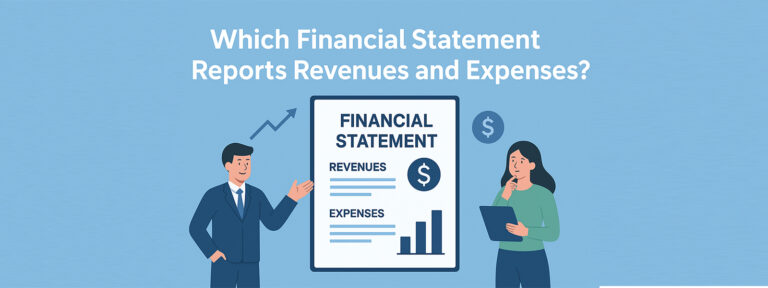As per a shocking report by PEX Card, businesses spend an average of 3000 hours every year correcting expense report errors. Rather than focusing on growth, businesses end up wasting valuable time that automation could have avoided altogether. In an era where accuracy, speed and transparency are crucial, automating expense tracking gives you real-time control, resulting in better policy compliance and quicker reporting.
If you’re wondering what exactly automated expense tracking is and how it helps businesses, this guide has got you covered. Therefore, stop chasing paper receipts and begin saving hours! This blog will transform how your business manages expenses, once and for all.

What Is Automated Expense Tracking? Everything You Need To Know
Automated expense tracking is a modernised way to manage business operation spending without the hassle of receipts and paperwork. Unlike manual expense tracking that comes with entering data by hand, requesting approvals and saving wrinkled receipts, automation uses modern features to manage everything digitally.
With expense report automation, employees can click a photo of a receipt and upload it to the system. The system will read the details, categorise the expense, ensure it meets the policy and send it for approval. Or even better – if the expense meets all the requirements, it is auto-approved by the system! This speeds up the process from receipt to report, resulting in accurate outcomes.
Also, with digital receipt capture, finance teams stay informed and organised. They no longer have to deal with missing/fake receipts. Instead, they receive real-time updates and accurate data that improve overall employee expense management.
Imagine, 20 minutes for each expense report sounds harmless? Now, picture doing that uncountable times daily, only to find that nearly 1 in 5 of them includes errors. That’s what the GBTA and HRS study revealed. And those small errors? They silently drain money, time and energy.
By automating your expense tracking workflow, you not only speed up the process but also reduce human error and save thousands of dollars.

Manual Vs Automated Expense Tracking - Choose the Best Solution For Your Business
Manual Expense Tracking | Automated Expense Tracking |
Receipts are hard to organise, often lost or faded | Digital receipts are captured instantly; therefore, everything is stored in real time |
Data entry is a slow process | OCR tech auto-fills fields, saving more time |
An expense report may take days or weeks to complete | Reports are prepared instantly with auto-categorisation |
Policy violations cannot be stopped until the month-end reviews are completed | Built-in policy flags non-compliant expenses in real time |
Managers spend hours reviewing and approving expenses | Automated approvals speed up the process |
Employees may delay submissions | With mobile-friendly tools, employees submit expenses on the go |
Audits can be stressful due to missing or duplicate information | Cloud-based log stores every detail in real-time |
Finance teams spend hours ensuring accurate reimbursements | Modernised, automated expense tracking ensures accurate reimbursements |
![]()
Key Benefits of Smart Expense Reporting
Smooth Integration With Accounting Software
Modern tools like ExpenseVisor connect directly to accounting platforms like NetSuite, Xero and QuickBooks. This makes reimbursement automation smooth, and all expense flows seamlessly into your books without requiring manual uploads. Result? It reduces errors and saves valuable time.
Customizable Approval Workflows
As a business owner, you can allot certain approval chains based on departments and spending thresholds. For example, a manager may directly approve anything under $500, while anything beyond that maybe routed to finance.
Mileage Tracking
Employees can log mileage using GPS tracking and receive preset per diem rates for travel. This ensures policy compliance while reducing the need for manual calculations.
Real-Time Budget Monitoring
Smart expense reporting provides live dashboards that gives a clear budget limitation to the employee. It helps employees to stay on track financially and make informed decisions quicker.
Global Expense Management Support
With support for multiple currencies, tax configurations and local compliance rules, modern tools like ExpenseVisor make it easier to handle expenses from remote teams and international office, all in one platform.
Must-Have Features in a Modern Expense Automation Tool
Smart businesses needs tools that moves as quick as they do. Here are a few key features that make all the difference:
Mobile-Friendly Design
A smart business expense software must have a mobile-friendly design that lets you handle everything from your phone. Tools like ExpenseVisor enables you to submit, review and approve expense from anywhere.
Pre-set Approval Flows
With great business expense software, you only need to set rules once and then system handles the rest! Expenses get routed to the right authority for approval, without any delays.
Quick Setup, Best Suitable for SMBs
You do not need long training sessions or an IT team to use tools like ExpenseVisor.That’s because such modernised tools are easy to set up and use.
Receipt Scanning
You no longer have to store receipts because with a business expense software, you can snap and upload your receipt. The system reads the details for you, making reimbursement automation faster than ever.
Real-Time Status Tracking
Track progress live to know where your expenses go.
Stay Cost-Efficient with ExpenseVisor
Smart expense tracking isn’t a trend; instead, it is a smarter way to grow your business and stay cost efficient without getting lost in approvals and receipts. With the right tool like ExpenseVisor, you can save time, cut costs and make life easier for your team.
Ready to see it in action? Try ExpenseVisor today! If you want to organise your business expenses, download our expense workflow automation checklist! This will help you streamline your process from day one. Bid farewell to messy spreadsheets and say hello to a faster and more efficient way of managing your business spending.




